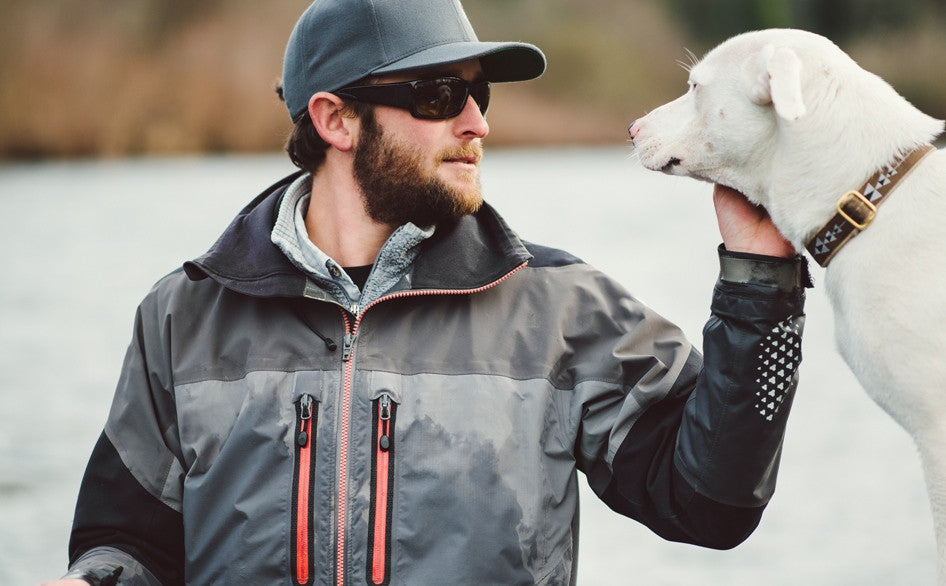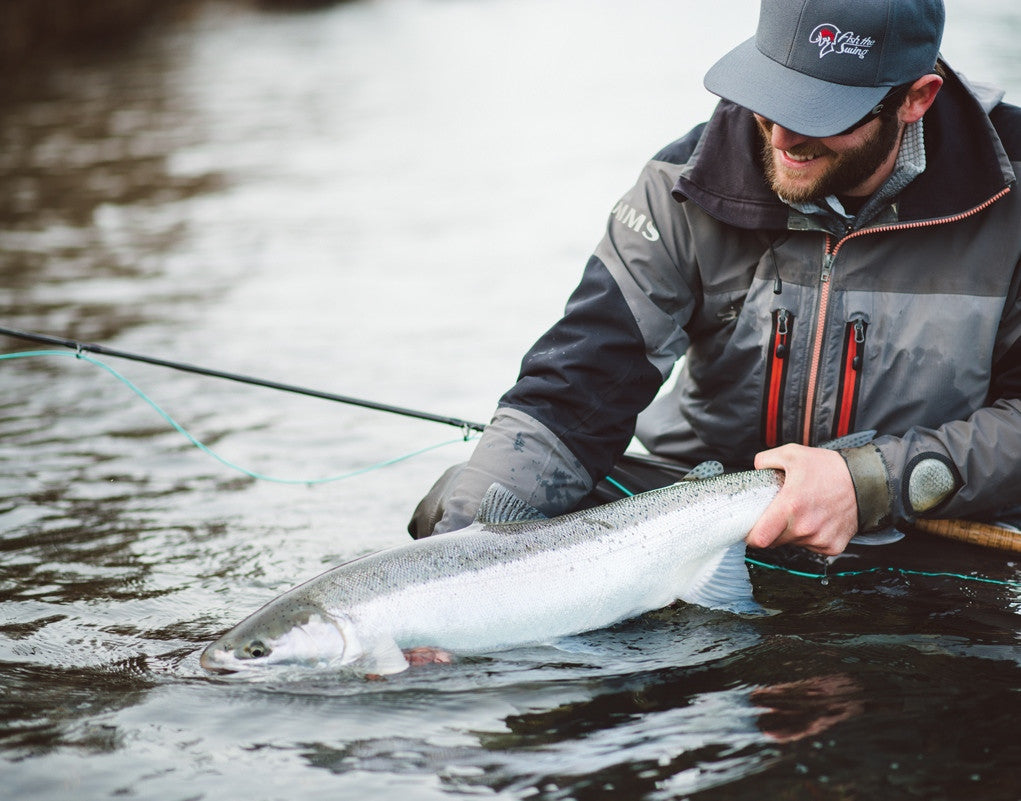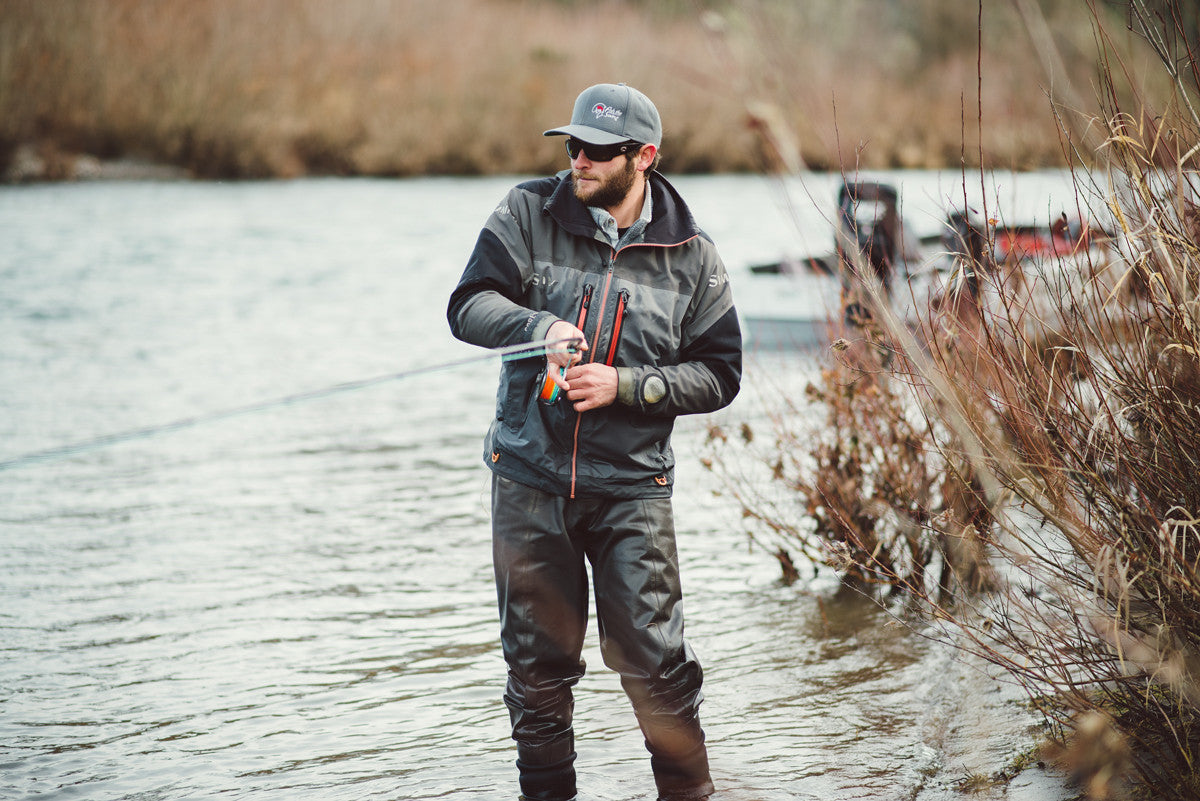
I guide mostly on the Deschutes river, spring through fall, as well as coastal streams in the winter. The deschutes season starts as a trout fishery for me in the spring and transitions to steelhead trips and camps by mid summer through the fall. I guide almost entirely in the lower canyon on the Deschutes, jet boating up from the mouth to fish the lower 15 or so miles. It's a pretty unbelievable ride, and I just love the look on people's faces the first time they run up river with me. The trout in the deschutes are all native Redbands. These are a desert strain of Rainbow trout. They don't typically grow very long, with an 18" fish being a big one. But they are extremely thick and athletic fish, with a lot of current to use to their advantage, they will fight well above their weight class. The prolific hatches make for great spring and summer dry fly fishing. Salmon flies and golden stones, pmd's and green drakes, and prolific caddis hatches all summer keep the trout well fed and often willing to rise. While a majority of our time is spent with dries or dry/dropper, when the trout aren't looking up, many of the Heavy riffles and runs on the Deschutes are tailor made for learning how to Euro nymph. 

The steelhead are a crazy mix of fish, with many of the fish we encounter being out of basin fish, that just dip into the Deschutes for a rest and cool water. This gives you a shot at the bigger B-Run fish that are destined to head to Idaho and upper Columbia river tributaries. We do nothing but swing for the steelhead, and almost entirely with spey rods. We fish floating lines as much as possible, and use the jet boats to find areas that are in the shade of the canyon whenever possible to increase our odds. There's nothing more special in Freshwater fly fishing than raising a summer steelhead to a floating line, let alone a dry fly! 

For trout, the new Contact II 10' 3wt is pretty much always in my hands...... and I don't Euro nymphy much! It tosses a WF3F extremely well and is a blast to fight fish on without ever feeling undergunned. All fishing is done while wading (no fishing from the boat by law on the Deschutes) and the extra length is a huge benefit in managing line and reaching over current edges. With the Rio single hand spey line, you can over head cast or roll cast like a champ. When I want to tightline nymph, I just add a long euro leader and away you go... Another surprise of this rod, it's an amazing single hand spey rod! With a 15lb running line, and the 150 grain SA spey light skagit or scandi head you can go from fishing dries to swinging 10' sinktips and big streamers using snap t's and double spey cast. Take off the spey head, attach the euro leader directly to the running line, and you're tight line nymphing perfectly. Not much this rod can't do.
For steelhead, it's obviously the 1307 DNA spey. While the 1266 DNA is just perfect on the deschutes, and many people prefer an 8wt in the winter, there is not one day I guide for steelhead on any river that the 1307 isn't onboard and rigged up. It's the easiest rod for me to teach a beginner with, and yet still the one I grab first on my personal fishing days anywhere from Oregon rivers to the Dean river in British Columbia 
These days, it's not easy to be a Steelhead guide. Diminishing fish returns and more challenging environmental conditions (for both us and the fish) often have me wondering how much longer we should even be chasing these fish. I'm a strong believer that fishermen are often the best friends that the fish can have. We use our time with customers to explain the challenges facing these fish and some possible ways forward, helping to grow a more conscientious angling public that will hopefully lead to a better future for these fish that we all love. Still, it starts to weigh heavy on me with these warm water summers challenging our cold water fish throughout the western United states.

These days, it's not easy to be a Steelhead guide. Diminishing fish returns and more challenging environmental conditions (for both us and the fish) often have me wondering how much longer we should even be chasing these fish. I'm a strong believer that fishermen are often the best friends that the fish can have. We use our time with customers to explain the challenges facing these fish and some possible ways forward, helping to grow a more conscientious angling public that will hopefully lead to a better future for these fish that we all love. Still, it starts to weigh heavy on me with these warm water summers challenging our cold water fish throughout the western United states.
Of course I love the challenge of being in tune with what the fish are doing, and putting people in the best possible position to succeed... but really the best part of guiding are the people themselves! We are lucky enough to have awesome clients and an extremely high rate of repeat customers. Most days it is like meeting friends at the boat launch. Making these connections with people from places and walks of life that you normally would never cross paths with is really what keeps me coming back.

